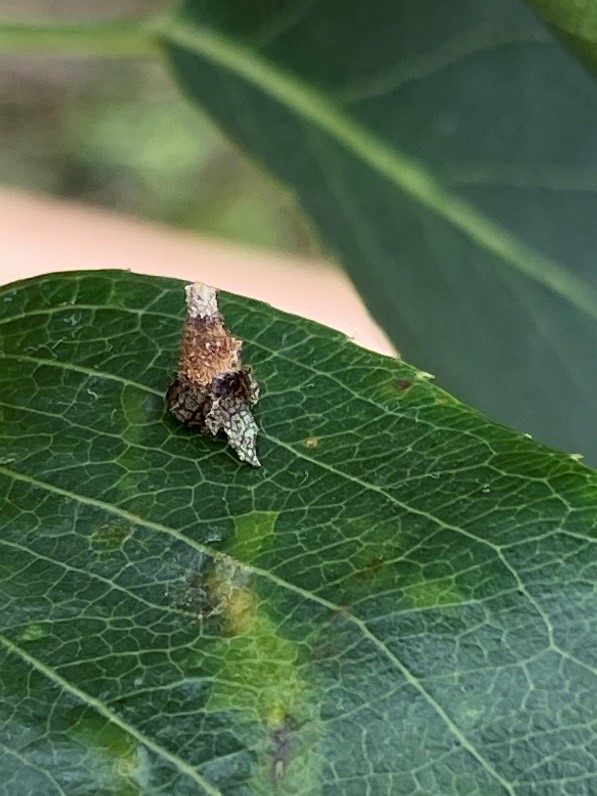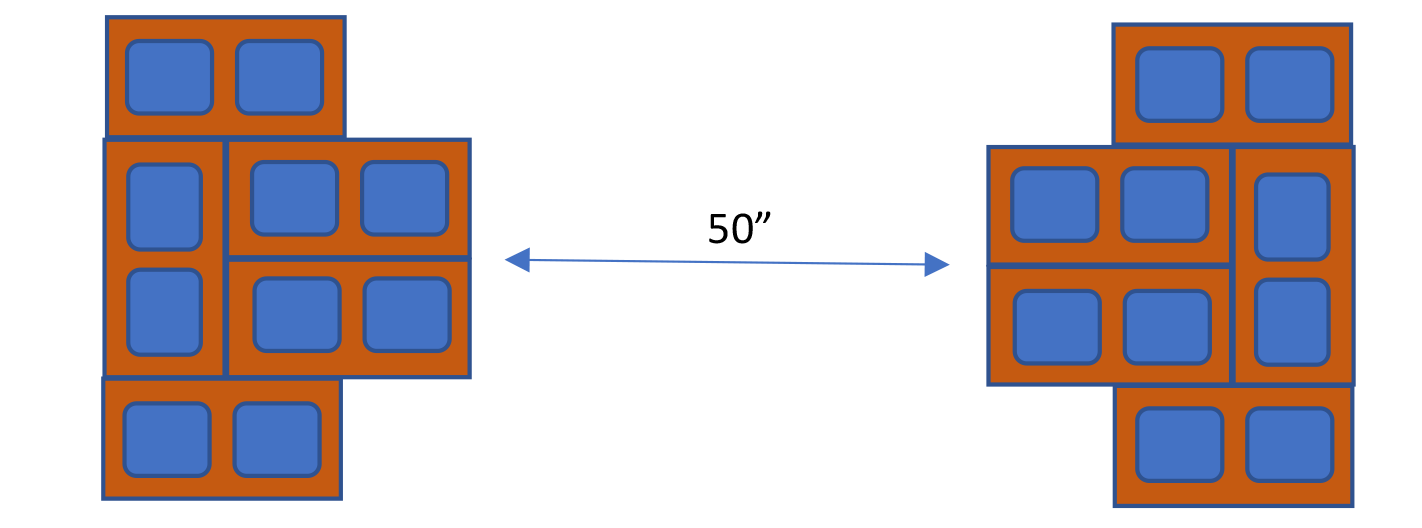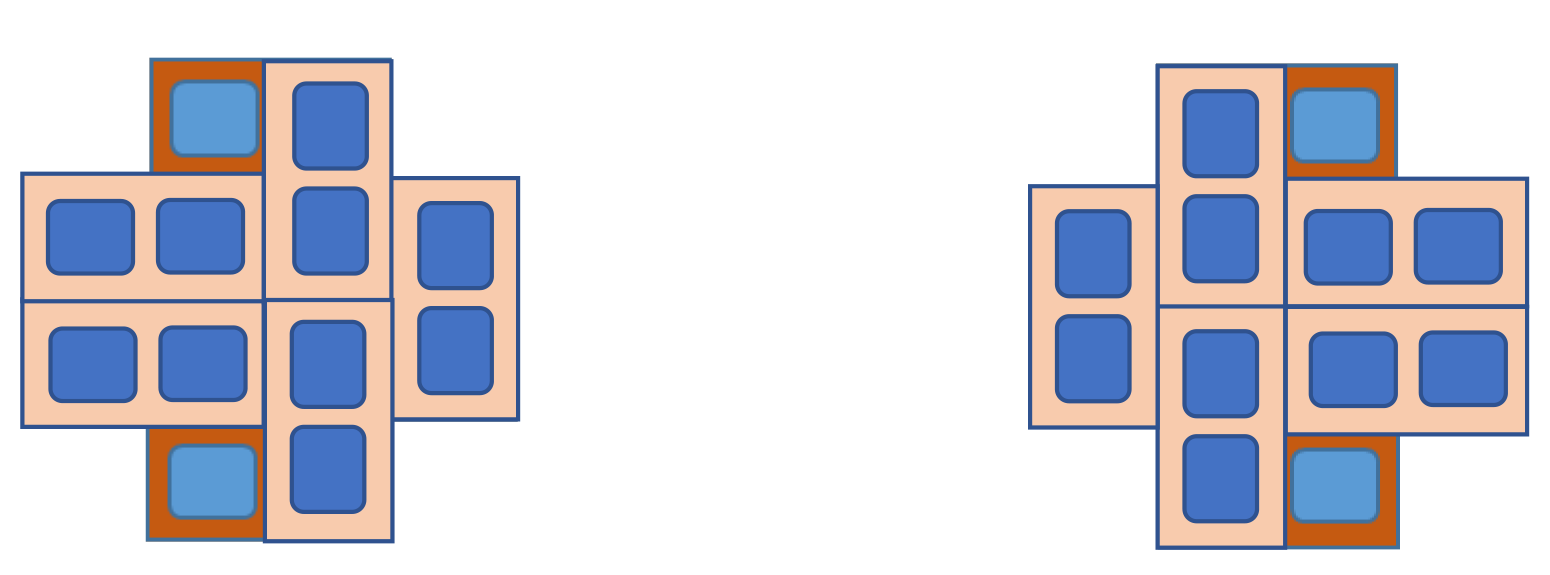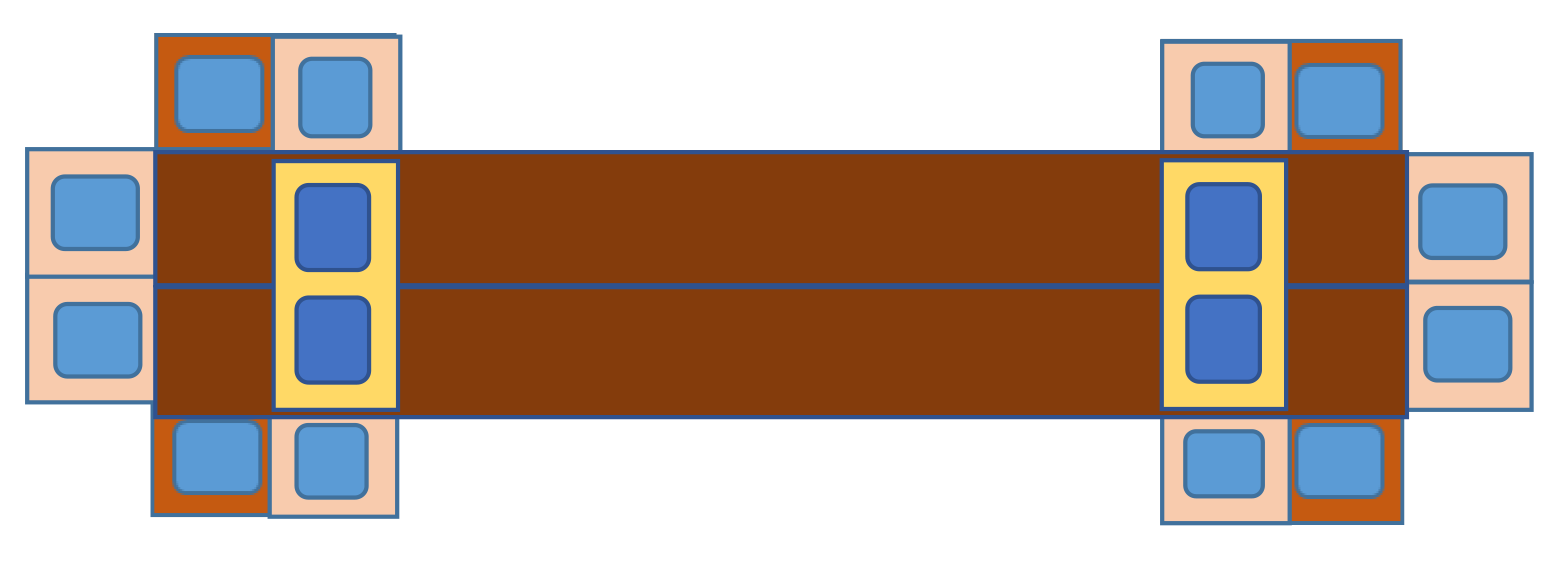June 2021 Horticulture Tips
Tuesday, June 1, 2021
Pecan Topics for June
Becky Carroll, Associate Extension Specialist, Fruit and Pecans
The upcoming Pecan Topics for June will be held on June 4 at 1pm. The meeting will cover timely topics for pecan growers and homeowners. Charlie Graham with Noble Research Institute will be discussing “Pruning Young Pecan Trees”. Mesonet specialist, Wes Lee will talk about “How to Use the Mesonet Scab Advisory”. With all the rain received lately, fungicide applications will be important with those susceptible pecan cultivars. Becky Carroll will be providing updates on ice damage recovery and pecan development at the Cimarron Valley Research Station and from other parts of Oklahoma.
Register in advance for this meeting through this zoom link.
The program is offered to anyone and at no charge. Extension educators who participate will receive in-service credit. Please feel free to promote to your pecan audience.
Information and recordings of previous sessions are available on the Oklahoma Pecan Management webpage or the Oklahoma Pecan Management Facebook page - @okpecans.
Questions can be emailed to becky.carroll@okstate.edu.
Tomato Blossom Drop or Poor Fruit Set
David Hillock, Consumer Horticulturist
Poor fruit set or blossom drop occurs on tomatoes for any of several reasons. Tomatoes do not set fruit well when the night temperature is below about 60o F or above about 70oF or when the day temperature is consistently above about 92o F. When these conditions occur, flowers will drop or fruit will be misshapen. Hormone-type “blossom-set” sprays can reduce spring bloom drop from low temperatures. “Blossom Set” sprays have very little effect upon the set of tomatoes during high temperature conditions. Avoid excessive nitrogen fertilization.
Dry soils can also lead to blossom drop; blossoms dry and fall when the plants do not receive enough water. Too much shade can result in only a few blossoms when the plants receive less than six hours of sunlight a day. Excessive nitrogen in the soil often promotes leaf growth at the expense of blossom and fruit formation.
To avoid or correct these problems take these measures:
- Plant early-, mid-, and late-season varieties at the appropriate time of year.
- Water tomatoes regularly, never allowing the soil to dry out; mulch with straw, black plastic, or other material to reduce moisture loss.
- Plant tomatoes in an area that receives at least six hours of sunlight each day. If the yard is too shady, plant the tomatoes in a container and set them on a sunny porch or patio.
- Reduce nitrogen applications if necessary. Be sure to follow the fertilizer application recommendations.
Bagworms are Back?
Becky Carroll, Associate Extension Specialist, Fruit and Pecans
Normally we consider bagworms as a pest on ornamental trees, but many of our fruit crops and pecans can be susceptible to bagworms too. If control is needed on fruit or nut trees, Bt or Bacillus thuringiensis var. kurstaki, a bacterial insecticide should work fine. With just a few bagworms, mechanical removal will work fine too (pick them off and smash). If growers are seeing infestations this year, they need to also prepare to treat next season. After mating this fall, females will lay hundreds of eggs inside the old bag and then drop to the ground to die. Then during the late May to early June timeframe, the larvae will emerge again to repeat the cycle. This is a prime time to treat.
Reports of bagworms on pecan and fruit trees have been seen where insecticides have not been used. The fruit tree demonstration block at the research station at Perkins has a few tiny bagworms on pear and other trees. The picture below shows how small the bag is on a pear leaf.
Brown Patch disease of Cool Season Grasses
David Hillock, Consumer Horticulturist
Brown patch is a disease that commonly shows up on cool season turfgrasses, especially Tall Fescue, but can occasionally appear on hybrid bermudagrass and zoysiagrass. Brown patch disease appears as brown patches up to three feet in diameter. Leaves first take on a dark color, then wilt and turn brown.
Brown patch usually occurs in hot, humid weather when night temperatures are above 60o F and foliage remains wet for prolonged periods. Poor soil drainage, lack of air movement, cloudy weather, heavy dew, overwatering and watering in late afternoon favor prolonged leaf wetness and increased disease severity. The application of high rates of nitrogen and or deficiencies of phosphorus and potassium, especially when weather conditions are favorable for brown patch, can increase disease severity. Excessive thatch, mowing when wet and leaf fraying by dull mower blades can also enhance the severity of brown patch.
Control. Control starts with good management practices. Though there are varieties of turf-type Tall Fescue that are considered resistant to brown patch, even resistant varieties succumb when growing conditions are less than ideal for growth of strong plants (as described above) and environmental conditions are highly favorable for disease development.
When environmental conditions favor disease, avoid application of excessive rates of nitrogen. Fertilizer should be applied judiciously, and adequate amounts of phosphorus and potassium are essential to ensure the highest possible levels of plant resistance. In general, cool-season turfgrasses should not receive more than one pound of actual nitrogen per 1,000 square feet at any one time. Use very low rates or avoid applying nitrogen in late spring or summer to cool-season turfgrasses. In a typical home lawn situation, the last application of fertilizer in the spring should be applied no later than early May. Ensure adequate amounts of phosphorus and potassium by applying these nutrients based on soil test results.
Reduce prolonged leaf wetness by watering infrequently to a depth of 6 to 8 inches and at a time when the foliage is likely to dry quickly. Avoid watering in late afternoon and evening and allow for better air movement by removing unwanted vegetation and selectively pruning trees and shrubs. Removal of morning dew reduces prolonged leaf wetness and exudates that favor disease development. This can be accomplished by dragging a hose across the turfgrass or by running the irrigation system for a short time. Good surface and soil drainage must be present to reduce disease incidence.
Make sure mower blades are sharp to reduce the amount of wounded turfgrass in which the fungus can enter the plant. Collect and promptly dispose of clippings on infected areas or when conditions favor disease development. Avoid mowing turfgrass when wet, and do not mow too low so that the turfgrass will be better able to resist the disease.
Applications of effective fungicides, when the first disease symptoms appear, will give good control of brown patch on highly maintained turfgrass. A preventative fungicide program should be considered in areas where the above conditions are difficult to control or change and when conditions are favorable for disease development.
Concrete Block Garden Bench
Casey Hentges, Oklahoma Gardening Host and Laura Payne
As gardeners, we often focus on the plants, but an important aspect that should not be overlook is creating a space to stop and enjoy the garden. This do-it-yourself bench creates an interesting feature with 16 holes to grow plants is about as easy as putting Legos together.
Materials
concrete blocks (for this specific configuration 22 blocks), wire mesh (expanded stucco metal works well), 2 – 2”x 6”x 8’ boards, landscape fabric, tin snips, metal flashing, level, tape measure, and outdoor glue such as liquid nails.
Step 1: Level the site.
The blocks need to be sturdy, so the site needs to be level. The number of blocks you have will determine the design. Basically, the concrete blocks provide the support for our boards.
Step 2: Construct Layer 1.
When placing your bricks, you want to make sure that all the holes are facing up so we can plant them later. On this first level, organize the bricks as seen in Figure 1. The 8’ long board will span 50” between the two stacks of bricks. Therefore, the two sets of bricks will mirror each other 50” apart.
Step 3: Construct Layer 2.
Add the second layer on concrete blocks as shown below in Figure 2. Half of each of the four outer most blocks will overhang the first level. These four overhanging blocks are not very sturdy yet.
Step 4: Place the boards.
The boards for the bench will span between the stacks of blocks to cover all the blocks in the center and only leave the four overhanging holes exposed as seen in Figure 3. The bench boards add a little extra weight to counterbalance the overhanging block.
Step 5: Place additional blocks.
To make it more secure, add one block on each side of the bench as seen in Figure 3.
Figure 3: Boards added with one block added on top on both sides.
Step 6: Line the overhanging blocks.
Lining the holes in the blocks that are overhanging with mesh and landscape fabric will keep the soil from washing out of the blocks. Expanded stucco metal or chicken wire is easy to cut with tin snips and rigid enough to shape. Cut a plus sign in the wire mesh to create an flat, open basket. Cut one plus sign out of mesh and use it as a template for the other 3 holes. Push the center of the “plus sign” mesh down into the hole. The center of the “plus sign” will become the bottom of the basket while the arms of the “plus sign” will fold up lining the inside of the concrete block. Use the landscape glue to attach the basket inside the holes. Then cut landscape fabric to line each basket to keep the soil from washing out. Allow this to dry thoroughly.
Step 7: Protect the wooden boards.
For the two blocks setting on top of the wooden boards, cut a piece of metal flashing that will cover the bottom of the blocks. Add a few pin holes in the flashing with a nail to allow for drainage. Use the landscape glue to attach the metal sheeting to the bottom of the brick. This will reduce the amount of moisture on the boards. Allow this to dry thoroughly before next step of planting.
Step 8: Plant the concrete blocks.
When looking for plants for these small holes keep in mind a couple of conditions.
- Look for a smaller plant, a 4” or quart size plant will be easier to plant in the brick holes than a 1-gallon plant.
- Perennial plant roots will not be well insulated and therefore considering annual is a better option.
- Be aware of the microclimates that have been created. The holes in the bricks that overhang is exposed to air and will dry out much quicker than the ones sitting on the bench or on the ground. Therefore, consider putting something that is a bit more drought tolerant in these holes.
Step 9: Sit back and enjoy your garden!
An instructional video can be found on the Oklahoma Gardening YouTube page.
Protecting Trees in the Landscape
David Hillock, Consumer Horticulturist
One of the leading causes of death to trees in the landscape is what we refer to as weed-eater or lawnmower “blight.” This is usually a result of someone trying to get too close to the base of the tree when controlling grasses and weeds. Constant use of weed-eaters around the base of trees wears down the bark and eventually cuts into the cambium layer girdling the tree and cutting it off to water and nutrients. Lawn mowers often take big chunks out of the trunk of the tree with similar results. The other problem is both wounds open the tree up for attack from insects and/or diseases.
To avoid this problem a weed and grass free area should be maintained around the base of the tree. For young trees a 4 to 6 foot diameter circle will work. Mulch can be placed 1 to 2 inches thick in this area to help keep weeds and grass out and at the same time moderate soil temperatures and soil moisture. Be sure to keep the mulch a few inches away from the trunk. Piling mulch several inches up the trunk is often referred to as a “mulch volcano” and can also have detrimental effects. Occasionally weeds and grasses that creep into the mulched area may need to be sprayed with an herbicide. Herbicides with glyphosate as the active ingredient work quite well. Be sure to read and follow label directions.
Another option for small trees is to put trunk guards or protective wraps made of flexible plastic. In some cases, tree stakes act as a barrier from mechanical injury.
For larger, more established trees, a mulched area or even a bare area near the trunk will help keep lawnmowers and weed-eaters away. Or consider planting groundcovers or perennials for a more aesthetical appeal.
In any event, avoid injury to the trunks of your trees at all costs. While many trees can recover from an occasional, small wound, repeated damage weakens the tree sending it into a declining spiral and eventually death.
Powdery Mildew of Ornamentals
David Hillock, Consumer Horticulturist
With the mild temperatures and plenty of moisture we have been experiencing this spring, conditions for fungal diseases are on the rise. Powdery mildew is a fungal disease we frequently battle that affects many host plants, including ornamentals, shrubs, and trees. On some ornamental plants, such as rose, lilac, crapemyrtle, oak and zinnia the disease can be very destructive. Severity of the disease depends upon many factors—variety of the host plant, age and condition of the plant, time of infection, and weather conditions during the growing season.
Although there are several different types of powdery mildew fungi, a lot of them produce similar symptoms on plant parts. Plant damage may range from an unsightly whitish powdery coverage of the foliage to drying out and browning of infected leaves. In some plants, buds may be infected, and production of flowers, fruits, or nuts may be affected. If diagnosed early, powdery mildew can be effectively controlled to prevent severe damage to plants.
Symptom
The first sign of the disease is the development of a white to gray or slightly brownish growth of mycelium over the surface of leaves or other parts. Powdery mildew fungi may also attack stems, buds, and flower petals of various ornamental plants. Powdery mildew infection of broadleaf plants may cause distortion (curling and twisting) and a reduction in size of infected leaves. When older leaves become infected, they usually show only the white patches of the fungus. Infected leaves may become distorted, turn yellow, and fall prematurely. Infected buds may fail to open, and infections can spread to mature flowers, causing flower blight. Also, nuts of the pecan can be infected, causing a reduction in quality.
Hosts (Susceptible Plant Species)
Powdery mildews are known to occur on almost all ornamental plants. Certain plant species and/or varieties are more susceptible to the disease than others. In Oklahoma, powdery mildews are common on ash, crapemyrtle, lilac, oak, photinia, roses, and zinnia.
Conditions Favoring Powdery Mildews
Humid conditions with widely fluctuating temperatures increase the occurrence of powdery mildew. The disease is common in crowded plantings where air circulation is poor and in damp, shaded areas. Young succulent growth is more severely affected than older tissues. Disease development is enhanced when cool, moist nights are followed by warm daytime temperatures.
Cultural Control of Powdery Mildews
Several practices will reduce or prevent development of powdery mildew. These practices involve reducing populations of the fungus in the vicinity of the host, changing environmental conditions around the host, and selecting more resistant varieties. Before plants are purchased, it may be to the homeowner’s advantage to inquire if the ornamental variety desired has any resistance to powdery mildew. If only susceptible varieties are available, avoid planting in low, shady locations. If powdery mildew becomes a problem, removal, and destruction of infected plant parts, should be practiced. Pruning of crowded plant material will also help increase air flow around leaves. This reduces humidity and thus helps prevent infection. Late summer application of nitrogen fertilizer should be avoided to limit production of succulent tissue, which may be susceptible to powdery mildew infection in the fall. Water only in the mornings so that the foliage will be dry by evening.
Chemical Control of Powdery Mildews
If cultural controls fail to prevent disease build-up or if the disease pressure is too great, fungicide spraying may be necessary. The best course of action is to combine both approaches, using cultural methods as well as following a good spray schedule.
When powdery mildew has been a problem in previous years, a recommended fungicide spray schedule should be started in the spring as new growth develops. The fungicide should also be applied during the flowering period to avoid blossom blight. For suggested fungicides refer to your local OSU Extension Office or nursery professional. Be sure to follow the instructions on the label for use on specific applications.
Weed Control in Vegetable Gardens
David Hillock, Consumer Horticulturist
Weeds rob vegetables of valuable water, light, and nutrients. Weeds often harbor insects, diseases, and nematodes that can damage vegetables and greatly reduce yields.
Mulching, hoeing, and hand-weeding are methods that can be used to control most of the weeds in the garden and to eliminate the problems of applying an herbicide and the possibility of herbicide injury to the garden crop. Good soil preparation, adequate control of weeds before planting, and planting crops when the soil is warm enough to get them up rapidly are all good practices that will help maintain a minimum amount of labor for weed control. Many Oklahoma gardeners in rural areas have ample space for gardening. If this is the case, be sure to leave enough space between rows to allow room for cultivating equipment.
Cultivation and hoeing should be done when weeds are small because weeds compete with the crops for light, water, and nutrients. Also, when weeds are large, they are much more difficult to remove without damaging the crops. Cultivation and hoeing should be done shallowly so that injury to the root system of the crop plants will not occur. Hand-weeding in the crop row is usually necessary.
Other cultural methods for weed control include:
- Crop selection – pick a crop and growing season where the plant will emerge rapidly, shade the soil, and prevent weed seed germination.
- Close spacing of vegetable crops can inhibit weed growth when the leaves overlap at maturity. In a raised bed, keep this in mind for spacing plants.
- Mulches of either organic (clean straw or hay, paper) or synthetic (plastic) will shade the soil surface, controlling most annual weed species.
- Sanitation of the garden at the end of the season is critical. Remove and destroy remaining weeds and their seed heads.
- Cover crops are ideal to shade out weeds, even Bermuda grass. Bermuda grass can be shaded and discouraged by the dense canopy of a cover crop such as sudangrass, sorghum or buckwheat. Establishing a cover crop regimen early can help with the success of shading out competitive weeds. Winter cover crops can prevent soil erosion, runoff and cool-season weed establishment, while adding valuable organic matter.
Weeds may also be controlled with herbicides. However, chemical weed control in the home garden is difficult because of the diversity of the crops grown in the garden. It is hard to find an herbicide that is selective enough to remove a specific weed without the potential or probability that it will also kill or damage some of the crops in the garden. With several types of plants located close together in a small area, some may be seriously damaged by any herbicide that you might select. However, there are a few formulations available which make them safer and easier to use. For example, glyphosate foam is easier to use and poses less risk to desirable plants. Some preemergence herbicides can also be used successfully in the garden when transplants are used or after seeds sown have emerged and matured. Visit your local garden center or county extension office for information on current preemergence herbicide products.
The best weed control in the home garden is a sharp hoe and good mulch.
OPGA Annual Meeting CEUs and Field Day Topics
Becky Carroll, Associate Extension Specialist, Fruit and Pecans
This year, the Oklahoma Pecan Growers Association conference will begin in Broken Arrow with a mini pecan class on Thursday, June 10 at 1pm. Growers wishing to earn CEU’s toward their Private Applicators License can attend the Thursday session for 2 CEU’s. They will need to provide their applicator’s number. The Thursday sessions will include Tips for a Successful Pecan Planting, Pecan Diseases, Pecan Insects and Pecan Cultivars. On Friday, during the educational meeting, growers can also sign up for an additional CEU.
The Saturday Field Day will be held at the Joe Ihle Orchard near Edna, Oklahoma. Always a popular event, the field day is a casual time to learn more about the history of the orchard, the growers, and educational topics. A few agenda items include late freeze damage, clover use in the orchard, fertilizer banding, tree planting demonstration, flowers & pollination, hog trapping and wildlife control. Lunch will be provided to attendees.
For more information, go to OK Pecan Growers where you can register online.




